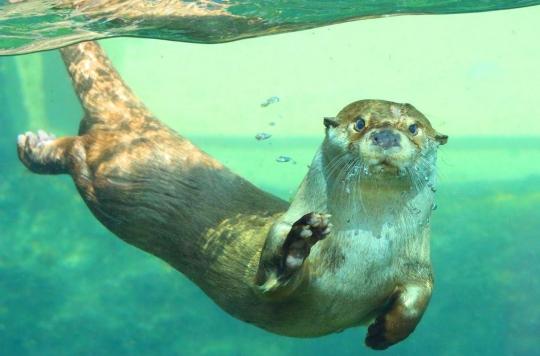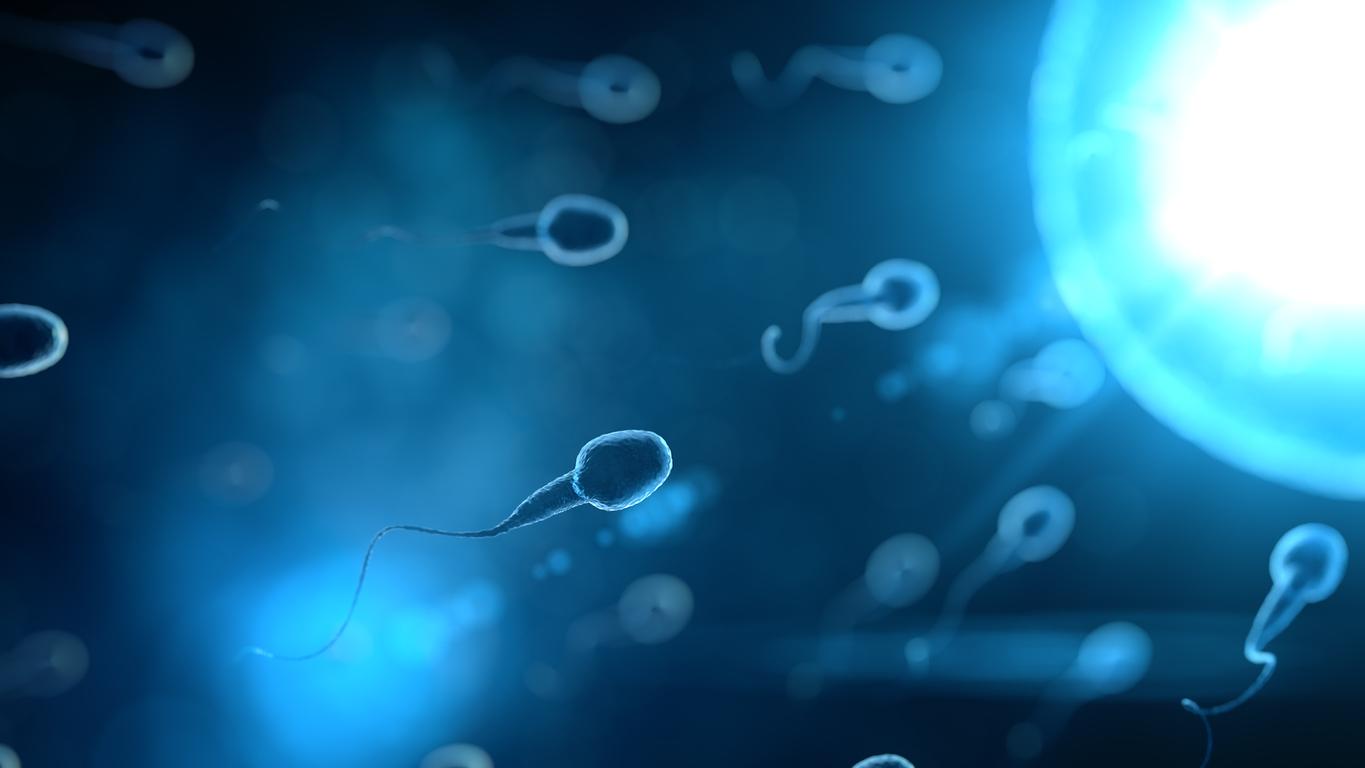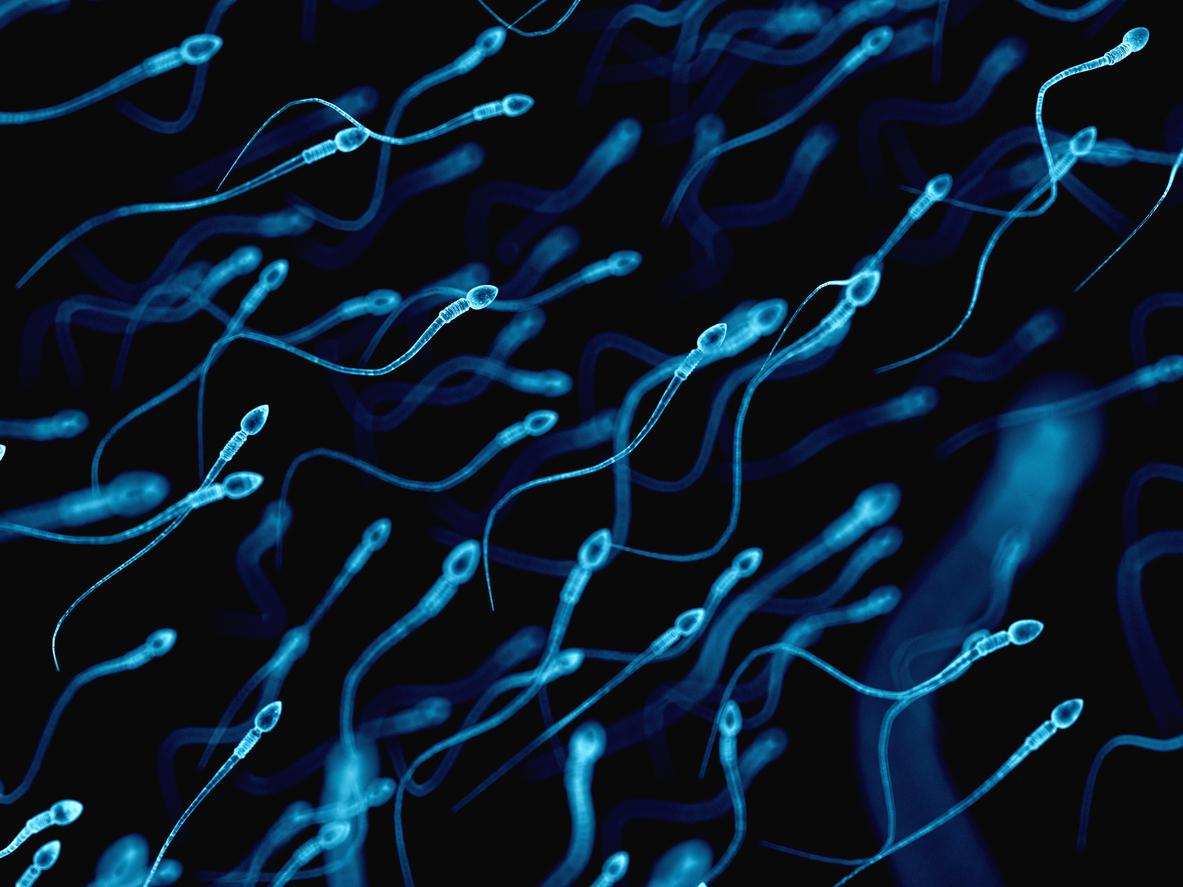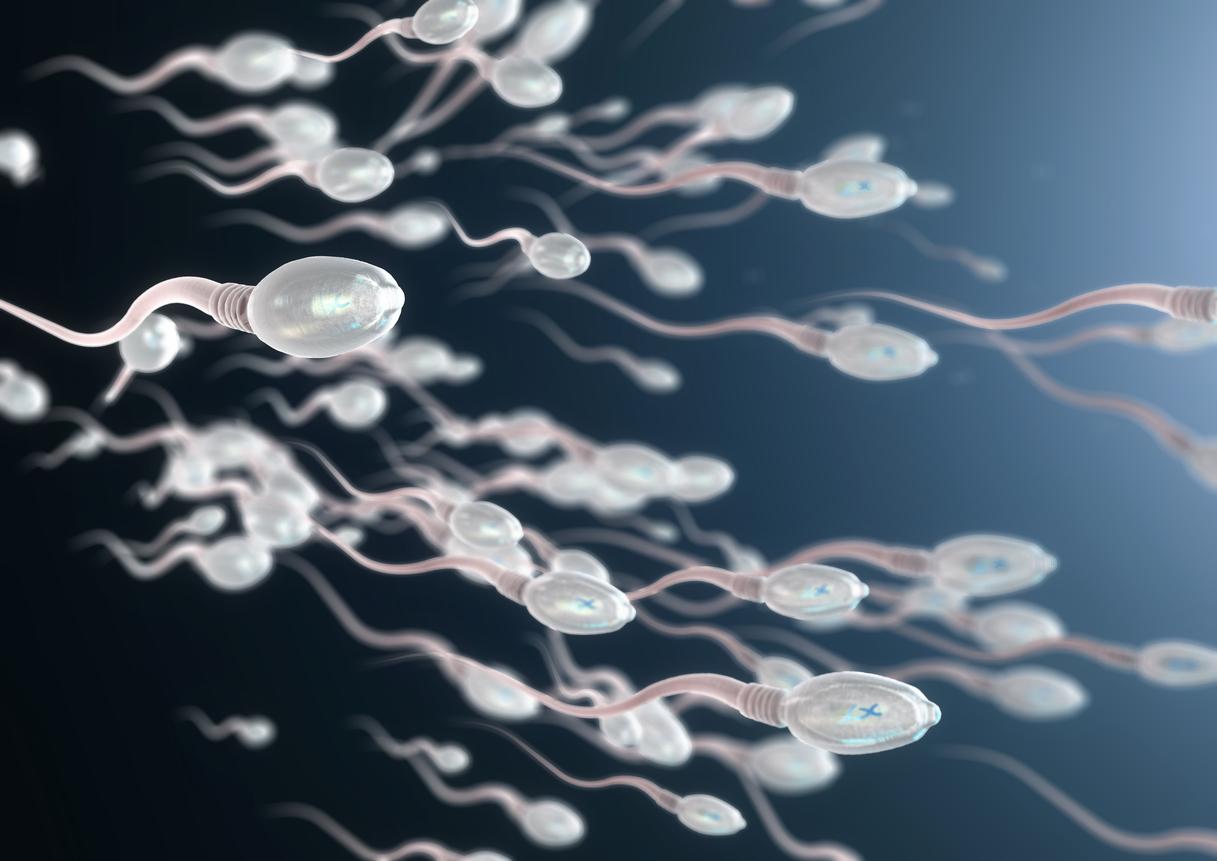A new study reveals that sperm, equipped with a wavy tail allowing them to move, have an attitude that is closer to the otter than to the eel.

- A sperm’s flagellum is actually wobbly, moving only to one side, and in order to keep it straight and not go around in circles in the race for life, the sperm have adapted a counter-movement.
- This is the first time that spermatozoa have been observed in 3D.
It’s time to go back to biology class. While sperm were thought to move in a similar way to eels, a new study reveals that they behave more like otters. Researchers at the University of Bristol (UK), in partnership with their counterparts at the Universidad Nacional Autonoma de Mexico (Mexico), used state-of-the-art 3D microscopy and mathematics equipment to study closer to the behavior of sperm. They published their results on July 31 in the journal Science Advances.
The flagellum is wobbly
Our depiction of sperm dates back over 300 years to an observation by scientist Antonie van Leeuwenhoek who was one of the first to use a microscope to study them. He described them as having a “tail which, while swimming, bumps with a snake-like movement, like eels in water.” The researchers who carried out the study used the new technologies at their disposal to confront this representation with reality. Using a high-speed camera clocked at 55,000 frames per second that they placed on a microscope with a device capable of rapidly moving a semen sample up and down, they managed to create a map 3D of sperm tail movement.
The results of these observations revealed that a sperm’s flagellum is in fact wonky, moving only to one side. To stay on the right path and not go around in circles in the race for life, the spermatozoa have adapted a counter-movement. They can correct their uneven tails by rolling, while they swim much like “playful otters pulling corks in the water”, estimated Dr Hermes Gadelha, head of the Polymaths laboratory at Bristol’s engineering mathematics department and an expert in the mathematics of fertility.
A revolution
What created the illusion in Leeuwenhoek and the others was the speed of movement. “The rapid and highly synchronized rotation of sperm causes an illusion seen from above. With 2D microscopes, the tail appears to have a symmetrical movement from side to side”, advanced Hermes Gadelha. The observation by 3D microscopy, a first, for the swimming of the spermatozoon was crucial for the discovery.
By overcoming the optical illusion that inspired the comparison of sperm with the eel, improving sperm quality ratings could provide new hope for effective treatments for men. This is an area of research of significant importance given that more than half of infertility is caused by male factors. “This discovery will revolutionize our understanding of sperm motility and its influence on natural fertilizationinsisted Dr. Alberto Darszon, of the Universidad Nacional Autonoma de Mexico, who participated in the study. Little is known about the complex environment within, the female reproductive system and how swimming sperm affects fertilization. These new tools open our eyes to the amazing capabilities of sperm.”
.
















